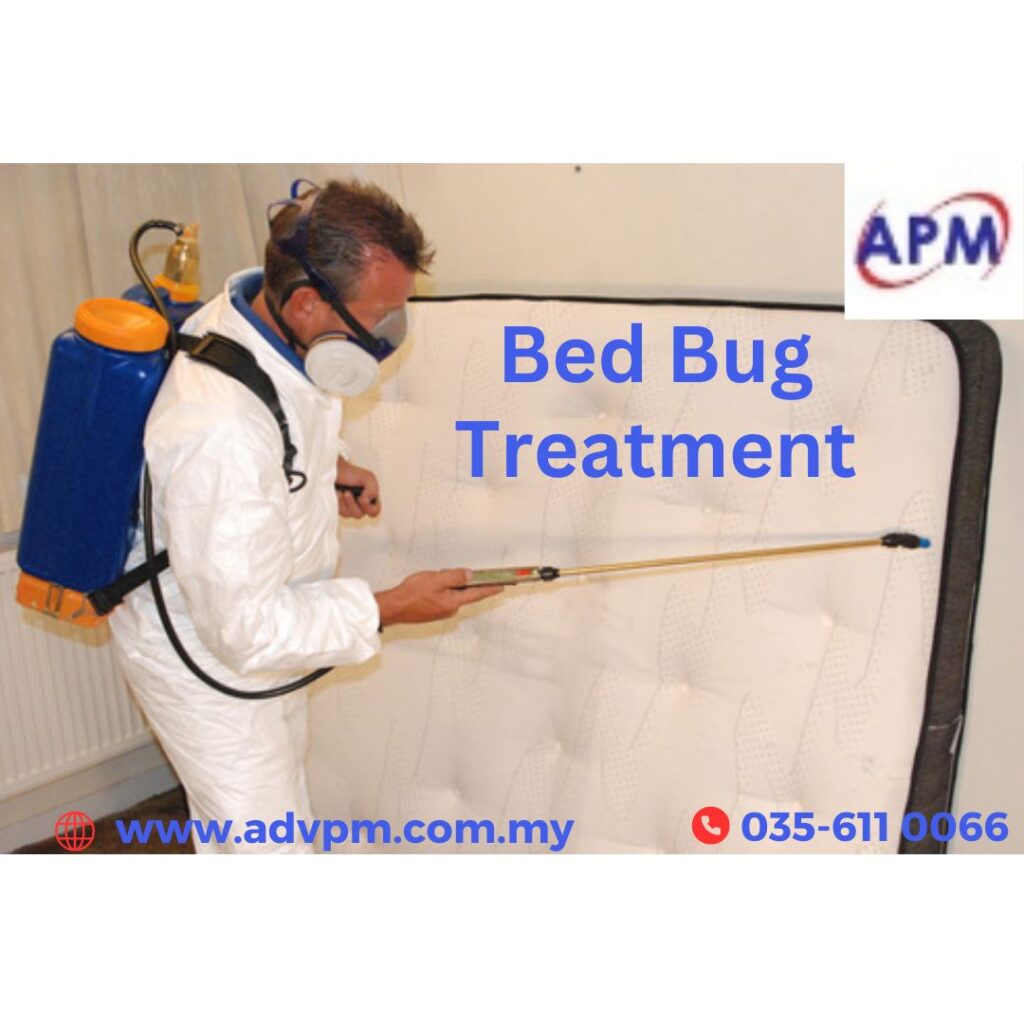Dealing with bed bugs can be overwhelming; however, understanding the process of bed bug treatment helps ease concerns. The guide will outline what to expect from preparation through post-treatment. Key steps, including anti-termite treatment, will ensure that you are informed and prepared for a successful bed bug treatment experience.
1. Initial Inspection: Identifying the Problem
Bed bug treatment starts with an inspection from a professional. It identifies the severity of the problem and determines where the bed bugs are harboring.
Things you can expect from an inspection include:
- Thorough search: The professional in pest control will look for bed bugs and their signs in beds, furniture, and baseboards.
- Tool usage for detection: Some professionals use special tools for the detection of bed bugs; this may involve traps or sniffer dogs.
- Damages assessment: The technician will assess the intensity of the infestation and the extent of the bugs.
After identifying the problem areas, the professional will provide more insights. Transiting into the treatment phase, knowing the process becomes crucial.
2. Treatment Preparation: Be Prepared
First, you are going to have to prepare the house for bed bug treatment. Preparation will enhance the effectiveness of the treatment by reaching all bed bugs.
Preparation steps:
- Clear clutter: The clutter in rooms complicates the job and hampers professionals from accessing all areas to be able to kill the bed bugs. Get rid of whatever is not required or needed.
- Do your laundry: Washing in hot water linen, fabrics, bed sheets, pillowcases, and clothing may kill bed bugs.
- Vacuum your home: This will reduce the number of bed bugs present and also reduce the number of eggs.
- Move furniture: Move all furniture away from the walls to access the hidden bed bugs.
You have prepared your home for treatment, so the treatment process can now begin. Knowing what goes on during this treatment will shed light on what happens next.
3. The Bed Bug Treatment Process: What Happens Next?
There are various ways through which pest control companies treat bed bug infestations. The two most common treatments include chemical treatments and heat treatments. While both options are effective, they do differ in process and duration.
a. Chemical Treatment
Chemical treatments categorize the insecticides used to kill bed bugs. This is one of the most common types of treatments highly effective when executed appropriately.
What to expect during a chemical treatment:
- Insecticide spraying: It involves the pest control technician actually spraying insecticides in the infested areas.
- Hidden space reach: Chemicals are sprayed on cracks, crevices, and all other hidden spots where bed bugs are likely to be hiding.
- Follow-up: With chemical treatments, it usually takes more than one visit to ensure all bed bugs will be killed.
This stage follows the chemical treatment and requires some time to allow for settling. You might also want to leave your home for a few hours.
b. Heat Treatment
Heat treatment increases the temperature in a room to a level sufficient to kill bed bugs and their eggs. This is a chemical-free method and thus nonhazardous to individuals with sensitivities to pesticides.
What You Can Expect from a Heat Treatment:
- Turn up the heat: The professionals will use specialized equipment that turns the room temperature above 120 degrees Fahrenheit.
- Thorough heating: High-temperature heat is given to furniture, walls, and mattresses to ensure no bed bugs survive. The time required: Heat treatments take one session and can take several hours in total.
After completing the heat treatment, the bed bugs should be gone from your house. Still, there may be some residual bed bugs that might take some time to show up.
4. Anti-Termite Treatment: A Related Service to Consider
Customers often inquire about other pest control services, such as anti-termite treatments, during bed bug treatment. Termites are one of the most structure-damaging insects, and an anti-termite solution may be worth considering when it comes to dealing with bed bugs.
What anti-termite treatment consists of:
- Inspection: Termite inspection is done to locate areas that may have termites.
- Termiticide application: Experts will apply termiticides around the foundation or inside the walls.
- Long-term protection: Anti-termite treatments offer long-term protection against infestation.
If termites pose a problem in your region, consider combining bed bug treatment with anti-termite solutions to save money.
5. Post-Treatment: What You Should Do
After applying the treatment, follow various steps to determine whether the bed bug problem has been resolved.
Follow these post-treatment steps:
- Wait to clean: Do not deep clean immediately but instead wait a few weeks for the treatment to fully take effect.
- Check for signs of activity: Observe the treated areas for signs of bed bug activity.
- Follow-up with service: Follow-up visits are recommended to be scheduled in order to ensure all bed bugs have been killed.
While treatment is now complete, vigilance must be extended. A successful treatment doesn’t actually end when the exterminator leaves.
6. Long-Term Prevention Tips
Prevention is the key to making sure that bed bugs never again come back to your place. In fact, with a couple of preventive measures, you can keep your home bed bug-free.
Preventive Tips:
- Regular inspections: Hire a professional who can inspect your homes for bed bugs at least every year.
- Use Care When Traveling: Bed bugs often travel on luggage and clothes, so inspect your luggage and clothes after traveling.
- Declutter: The less clutter in your home, the less temptation for bed bugs.
- Use Protection Covers: Covers for mattresses and box springs will prevent bed bugs from laying eggs.
You are now complete with these prevention tips so that you may never have to deal with an infestation anytime soon. Prevention translates to long-term comfort.
Conclusion: A Smooth and Effective Bed Bug Treatment Process
Bed bug treatment is a multistage process that involves some level of professionalism and effective preparation. Every phase—from the initial inspection to the post-treatment measures—is important in order to make your home bug-free.
Knowing what to expect with the treatment, whether it is chemical or heat-based, helps you prepare better for the process. And of course, don’t forget to ask about anti-termite treatment if these insects are an issue in your region. Lastly, take preventative steps so that the bed bugs do not come back.






